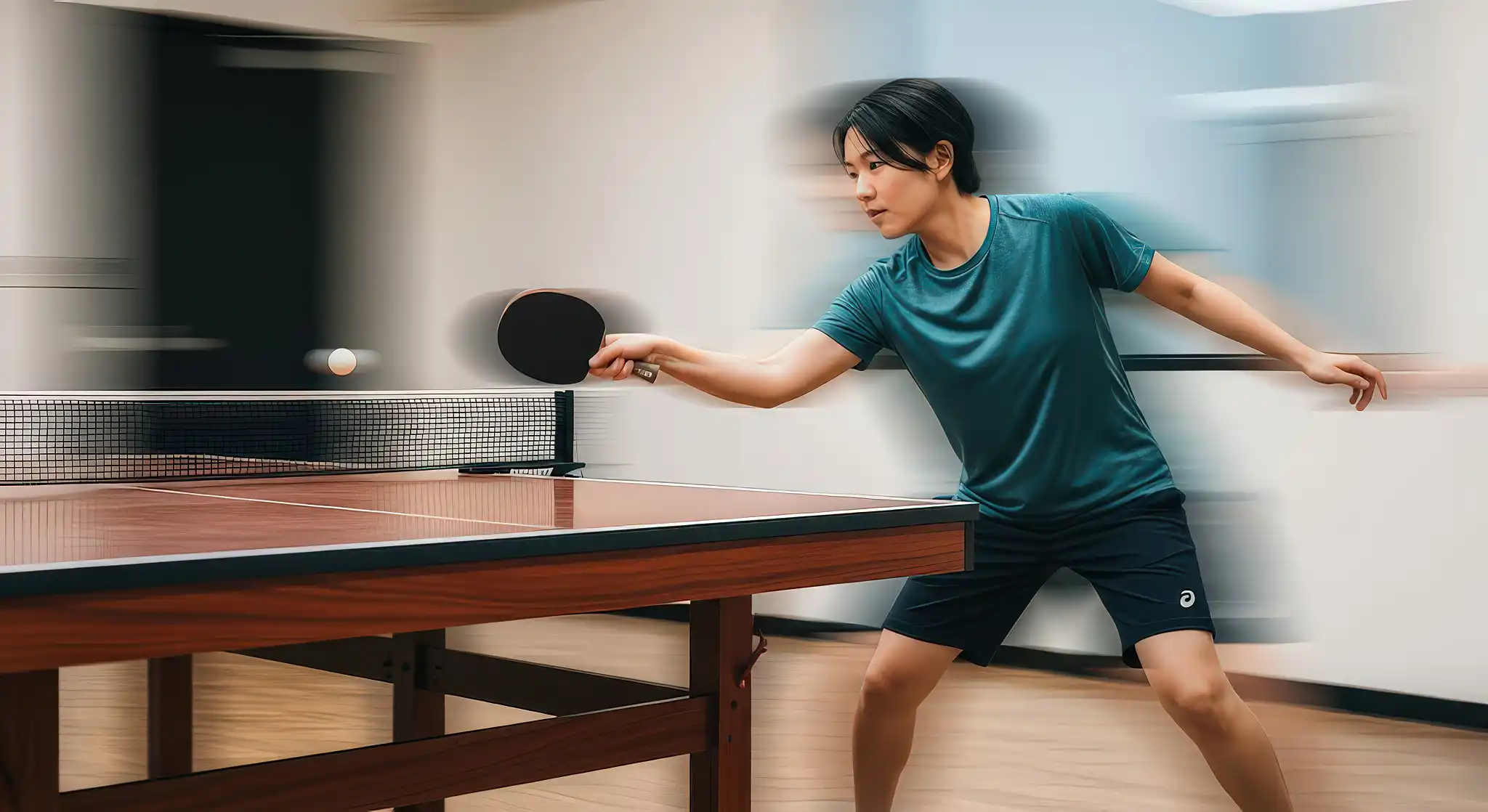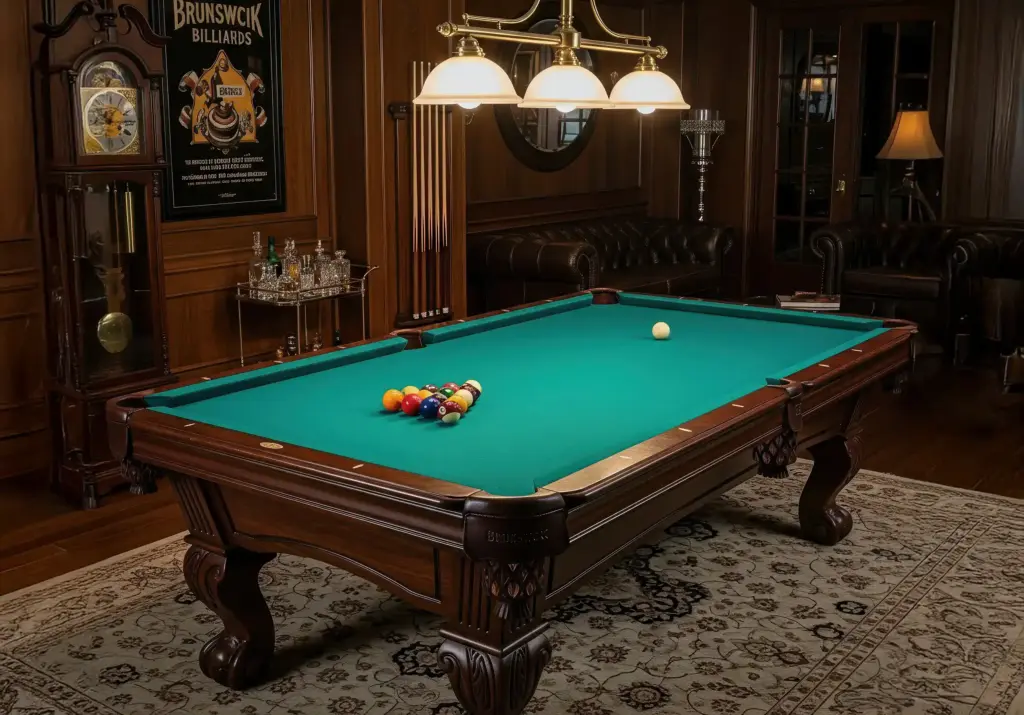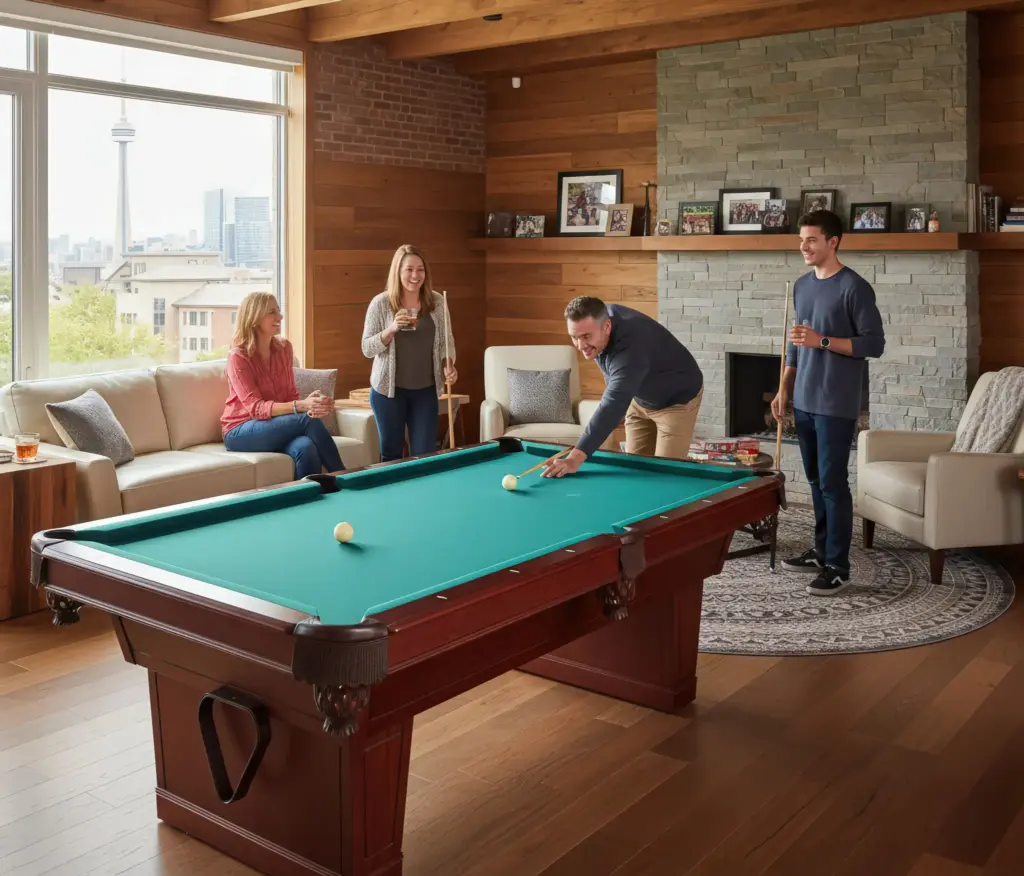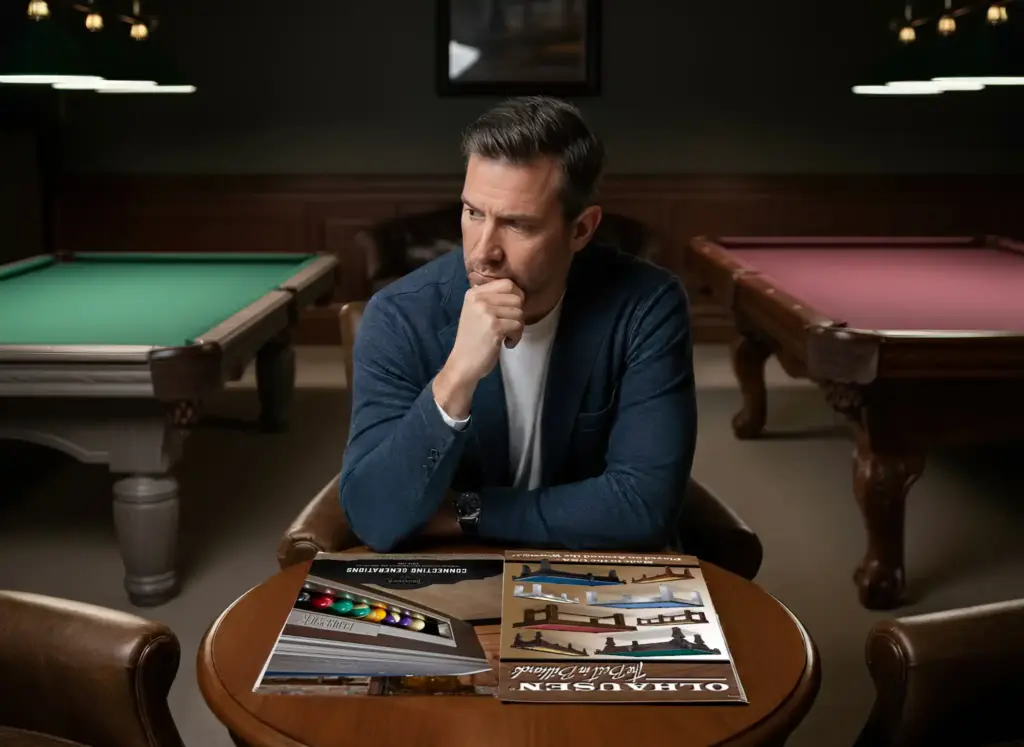Introduction
Have you ever felt the thrill of a fast-paced rally, only to hit a frustrating plateau in your table tennis journey? Many players move from casual basement games to a desire for greater skill but find themselves stuck, unable to bridge the gap between hitting the ball and truly controlling it. The path from enthusiast to a proficient player is filled with nuances—subtle spins, precise footwork, and clever tactics that aren’t immediately obvious. This complexity is the central challenge for any aspiring player. This guide is designed to be your trusted companion, demystifying the sport and providing a clear, structured roadmap for mastering table tennis. We will break down every essential element, from foundational techniques to Aiming for the “crossover point” (tthe advanced strategies that define competitive play, giving you the tools to systematically elevate your game.
Key Takeaways
- Solid Fundamentals Are Non-Negotiable:
Mastering a proper grip, a balanced stance, and integrated footwork from the very beginning is the most critical factor for long-term success and preventing hard-to-break bad habits.
- Spin is the Language of Advanced Play:
Progressing beyond the basics is impossible without understanding how to generate, read, and react to different types of spin (topspin, backspin, and sidespin).
- Table Tennis is “Physical Chess”:
Winning at higher levels requires more than just good strokes; it demands strategic thinking, including attacking an opponent’s weaknesses, varying the speed and spin of your shots, and adapting your game plan mid-match.
- Relaxation Breeds Explosiveness:
A common mistake is to equate power with tension. True power and speed in strokes come from a relaxed body that allows for sudden, fluid acceleration at the point of contact.
- Structured Practice Beats Random Hitting:
Consistent improvement comes from structured training sessions that incorporate specific drills for footwork, strokes, and serves, rather than just playing games.
What Are the Foundations of Table Tennis?
A journey into mastering table tennis begins with a solid understanding of its core components. Rushing into complex shots without building a strong base is a common mistake that hinders long-term development. By focusing on the rules, your physical connection to the paddle, and the basic strokes, you create the essential platform from which all advanced skills will grow.
What Are the Basic Table Tennis Rules and Scoring System?
The International Table Tennis Federation (ITTF) governs the official rules. A rally starts with a legal serve, where the ball must be tossed at least 6 inches vertically from an open palm before being struck. The serve must bounce once on the server’s side, clear the net, and then bounce on the receiver’s side. After the serve, players alternate hitting the ball, which must bounce once on their side before being returned. A point is scored if an opponent fails to make a legal return.
Games are typically played to 11 points, and a player must win by at least a two-point margin. If the score reaches 10-10, play continues until a two-point lead is established. A match is usually the best of five or seven games. Doubles play has additional rules, including alternating hits between partners and a diagonal service requirement.
How Do You Choose the Right Table Tennis Grip?
The way you hold the paddle is fundamental to your control, power, and ability to generate spin. The most common style is the Shakehand grip, used by a majority of players globally. It’s held like you are shaking someone’s hand, offering excellent versatility and a good balance of power between forehand and backhand strokes. Its primary weakness is the “crossover point” in the middle of the body, where a player must transition between strokes, creating a tactical vulnerability.
The Penhold grip, popular in many Asian countries, involves holding the handle between the thumb and index finger like a pen. This grip offers superior wrist flexibility, which can be an advantage for serves and short-game play, and it eliminates the awkward crossover point of the Shakehand grip. A less common style is the Seemiller grip, where the thumb and index finger are on opposite sides of the rubber, offering unique spin capabilities.
What is the Correct Stance and Why is Table Tennis Footwork Important?
An optimal ready stance forms the base for all movement and stroke production. You should stand with your feet at least 1.5 shoulder-widths apart, keeping your center of gravity low. Your upper body should be relaxed, leaning slightly forward, while your legs are engaged and ready for explosive movement. Standing on the balls of your feet, not your heels, is crucial for balance and agility.
Footwork should be practiced from day one. The golden rule is to move your feet before you hit the ball. Proper positioning, enabled by good footwork, is what allows for consistent, powerful, and accurate strokes. Neglecting footwork leads to poor balance, late hits, and inconsistent shots.
What Are the First Strokes a Beginner Should Learn?
For beginners, the focus should be on consistency and control, not power. Mastering the foundational “big six” strokes is essential, as detailed in many guides on how to play table tennis:
- Forehand and Backhand Drives:
These are basic offensive strokes used against topspin or no-spin balls. The goal is to hit the ball with speed and consistency, forming the basis of a rally.
- Forehand and Backhand Pushes:
These are defensive strokes used against backspin. The goal is to keep the ball low and maintain the backspin, slowing down the rally or setting up an attack.
- Serve and Serve Return:
These are the first and second shots of every point and require dedicated practice to master.
How Do You Elevate Your Game with Intermediate Techniques?
Once you have a firm grasp of the fundamentals, the next stage of mastering table tennis involves the intricate world of spin. Spin is what separates intermediate players from advanced ones. Understanding how to create it, control it, and read it from an opponent is the key to unlocking a higher level of play and dictating the flow of a match.
What is Table Tennis Spin and How Does It Work?
Spin is the heart of modern table tennis. The ability to manipulate the ball’s rotation determines its trajectory, its bounce, and how your opponent must react. The three main types of spin are:
- Topspin:
The ball rotates forward in the direction of travel.This causes the ball to dip sharply downwards (due to the Magnus effect) and kick forward aggressively after the bounce. A closed racket angle is needed to counter it.
- Backspin (Underspin):
The ball rotates backward against the direction of travel. This causes the ball to have a flatter trajectory and float longer. It will tend to drop off the opponent’s racket and slow down after the bounce. An open racket angle is needed to counter it.
- Sidespin:
The ball rotates on a vertical or near-vertical axis, causing it to curve sideways in the air and kick to the side after bouncing. This is often combined with topspin or backspin for deception.
What Are Some Advanced Table Tennis Serves?
Advanced serves are not just about starting the point; they are about gaining an immediate advantage. This is achieved through spin, placement, and deception. The goal is to use a similar-looking motion to produce different types of spin, forcing a weak return from your opponent that you can attack. Key advanced serves include the Forehand Pendulum Serve, which can generate all types of spin with a consistent motion, and the Tomahawk Serve, a chopping motion that imparts heavy sidespin and backspin. The High Toss Serve is another technique where tossing the ball higher allows the server more time to generate extreme spin and power.
What is Looping and Chopping in Table Tennis?
Looping is the primary offensive stroke in modern table tennis. It’s an evolution of the forehand drive that uses a dramatic upward brush of the ball to impart massive topspin. A successful loop causes the ball to arc high over the net and then dip viciously onto the opponent’s side, making it extremely difficult to return. It is the main weapon used to attack backspin balls.
Chopping is the corresponding advanced defensive stroke. Used away from the table against an opponent’s attack (often a loop), the chop is a long, sweeping motion that imparts heavy backspin. A good chop keeps the ball low and forces the attacker to lift the ball on their next shot, often leading to an error or a less powerful attack.
What Tactical Approaches and Drills Win Matches?
Technical skill alone is not enough for mastering table tennis. At a competitive level, the sport becomes a high-speed game of physical chess. Implementing smart tactics, developing agile footwork through dedicated drills, and maintaining a strong mental game are what turn practice into performance and points into victories.
What Are the Most Important Table Tennis Tactics?
Strategic thinking involves exploiting your opponent’s weaknesses while leveraging your own strengths. Key tactics include:
- Attacking the Middle:
Aiming for the “crossover point” (the opponent’s playing elbow) can cause indecision between forehand and backhand strokes, forcing a weak return.
- Playing Wide to Open the Table:
Hitting shots to the extreme corners forces your opponent to move, creating open space for your next attack.
- Changing Spin and Speed:
Avoid being predictable. Varying between heavy spin and light spin, or fast shots and slow shots, can keep your opponent off-balance and prevent them from finding a rhythm.
- Using Serves to Set Up Your Attack:
Your serve should be designed to force a return to your strongest shot. If you have a powerful forehand, serve in a way that encourages a return to your forehand side.
What Are the Best Table Tennis Footwork Drills?
Agile footwork is what connects your strokes. Drills are essential for making these movements second nature.
- Beginner Drills:
Start with simple side-to-side drills, where a partner hits consistently to your forehand and backhand corners, forcing you to move for each shot.
- Intermediate Drills:
Progress to random placement drills, where your partner hits anywhere on the table, forcing you to react and move to every ball.
- Advanced Drills:
The “Falkenberg drill” is a classic. Your partner hits two balls to your backhand corner and one to your forehand corner. You must play a backhand, then move to play two forehands (one from the backhand side), training both lateral and transitional movement.
How Do You Choose and Maintain the Right Table Tennis Equipment?
The right tools can significantly impact your development and performance. As the sport has evolved, so has the technology behind the equipment. Understanding the components of a racket and how to care for them ensures your gear supports your style of play.
What Should You Look for in Table Tennis Equipment?
- Rackets (Blades and Rubbers):
A racket consists of a wooden blade and two sheets of rubber. Blades vary in speed and stiffness; beginners should opt for more flexible, all-around blades (ALL) for better control. The rubber is crucial for spin. Smooth (inverted) rubber is the most common and offers the most spin potential. Sponge thickness also matters; thinner sponge (under 1.8mm) offers more control, while thicker sponge provides more speed.
- Balls:
Tournament-level balls are rated as 3-star. Modern balls are made of ABS plastic and are 40mm+ in size. They offer a more consistent bounce than older celluloid balls.
- Tables:
Regulation tables have a top that is at least 3/4 inch thick, with professional tables being 1-inch thick for the most consistent bounce. Hallmark Billiards offers a range of high-quality tennis tables, such as the Smash 7.0, suitable for all levels of play.
How Do You Maintain Your Equipment?
Proper care extends the life and performance of your gear. The rubber surfaces on your racket are the most important part to maintain. After playing, wipe them down with a specialized rubber cleaner or even just by breathing on them to create condensation and wiping with a soft cloth. This removes dust and oils that reduce grip. Store your racket in a case, away from extreme temperatures and direct sunlight, to protect the rubber from degrading. Rubbers should be replaced periodically, as they lose their grip and elasticity over time.
Frequently Asked Questions (FAQ)
What is the single biggest mistake beginners make in table tennis?
- The most common and detrimental mistake is neglecting fundamentals, especially footwork and stance. Many beginners are eager to hit powerful shots but do so from a poor position, leading to inconsistency and bad habits that are very difficult to correct later.
How often should I replace my racket rubbers?
- This depends on how often you play. For serious players training 4-5 times a week, rubbers may need to be replaced every 2-3 months. For recreational players playing 2-3 times a week, every six months to a year is generally sufficient. The rubber loses its grip over time even without use.
Is the Shakehand grip or Penhold grip better?
- Neither grip is definitively “better”; they just have different strengths and weaknesses. The Shakehand grip is more versatile and generally easier for beginners to learn, offering a good balance of forehand and backhand strength. The Penhold grip allows for more wrist action, which can be an advantage for serves and in-rallies, but it can be weaker on the backhand for some players.
How do I generate more spin on my shots?
- Spin is generated by “brushing” the ball with a fast, accelerating motion, not by hitting it flat. To create topspin, your racket should move in an upward and forward direction, grazing the ball. For backspin, the motion is downward and forward. A relaxed arm and a quick snap of the wrist at contact are key.
Conclusion
Mastering table tennis is a rewarding journey that blends physical skill with mental acuity. It begins not with power, but with a patient dedication to the fundamentals: a solid grip, a balanced stance, and the integrated footwork that sets the stage for every shot. As you progress, the focus shifts to the nuanced language of the sport—spin. Learning to generate, control, and read spin is what elevates your game from simple rallies to complex, strategic exchanges.
This journey from beginner to advanced player is built on a foundation of structured practice, tactical awareness, and a competitive mindset. It’s about understanding that table tennis is “physical chess,” where every serve, every loop, and every block is part of a larger strategy. By choosing the right equipment, maintaining it properly, and committing to deliberate practice, you can systematically break through plateaus and unlock your full potential. The path is challenging, but the thrill of executing a perfect, spin-loaded shot makes it all worthwhile.
For expert advice on selecting the right table tennis equipment for your home or facility, contact Hallmark Billiards today.




